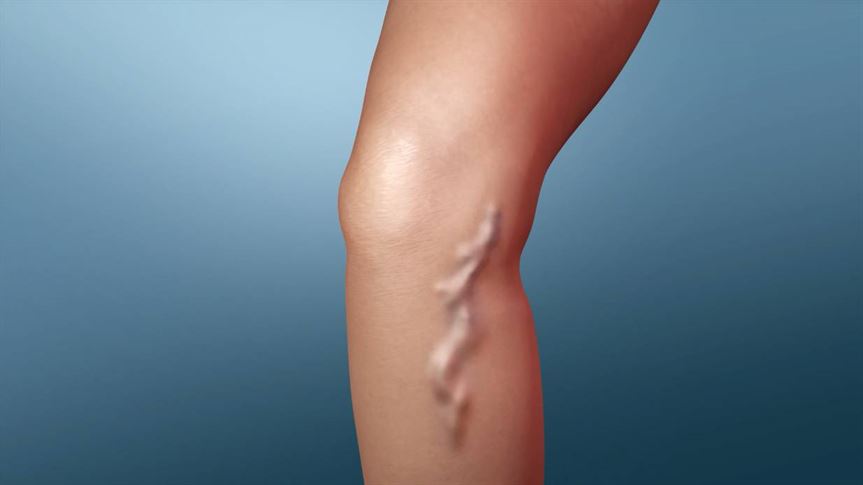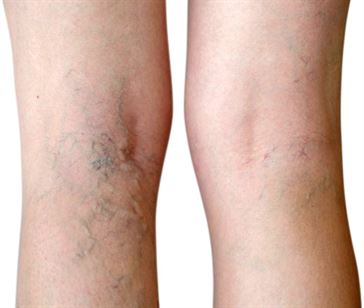Need Help?
Please Feel Free To Contact Us. We Will Get Back To You With 1-2 Business Days.
info@aakaraesthetics.com
9890844400
Varicose Veins Surgery in Nashik
Varicose vein treatment, also known as endovenous ablation, uses radiofrequency or laser energy to cauterize and close varicose veins in the legs. It may be used for cosmetic purposes, but it is most commonly used to help ease varicose vein-related symptoms such as aching, swelling, skin irritation, discolouration or inflammation. Endovenous ablation is safe, less invasive than conventional surgery, and leaves virtually no scars.

Benefits
- No surgical incision is needed—only a small nick in the skin that does not have to be stitched.
- When compared with traditional vein stripping techniques, endovenous ablation is more effective, has fewer complications, and is associated with much less pain during recovery.
- Endovenous ablation is generally complication-free and safe.

Fast facts on varicose veins
- Pregnant women are more susceptible to varicose veins.
- Symptoms can include aching legs, swollen ankles, and spider veins.
- People who are overweight have an increased risk of varicose veins.
What are varicose veins?
An example of varicose veins in the leg.
Varicose veins are large, swollen veins that often appear on the legs and feet. They happen when the valves in the veins do not work properly, so the blood does not flow effectively.
The veins rarely need treatment for health reasons, but if swelling, aching, and painful legs result, and if there is considerable discomfort, treatment is available.
There are various options, including some home remedies.
In severe cases, a varicose vein may rupture, or develop into varicose ulcers on the skin. These will require treatment.
Treatment
If the patient has no symptoms or discomfort and is not bothered by the sight of the varicose veins, treatment might not be necessary. However, if there are symptoms, treatment may be required to reduce pain or discomfort, address complications, such as leg ulcers, skin discoloration, or swelling.
Some patients may also want treatment for cosmetic reasons – they want to get rid of the “ugly” varicose veins.
Surgery
If varicose veins are large, they may need to be removed surgically. This is usually done under general anesthetic. In most cases, the patient can go home the same day – if surgery is required on both legs, they may need to spend one night in hospital.
Laser treatments are often used to close off smaller veins, and also spider veins. Strong bursts of light are applied to the vein, which gradually fades and disappears.
Ligation and stripping
Two incisions are made, one near the patient’s groin at the top of the target vein, and the other is made further down the leg, either at the ankle or knee. The top of the vein is tied up and sealed. A thin, flexible wire is threaded through the bottom of the vein and then pulled out, taking the vein with it.
This procedure does not usually require a hospital stay. Ligation and stripping can sometimes result in bruising, bleeding, and pain. In extremely rare occasions, there may be deep vein thrombosis.
After surgery, most patients will need 1-3 weeks to recover before going back to work and other normal duties. During recovery time, compression stockings are worn.
Sclerotherapy
A chemical is injected into small and medium-sized varicose veins, which scars and closes them. A few weeks later, they should fade. A vein may need to be injected more than once.
Radiofrequency ablation
A small incision is made either above or below the knee, and with the help of an ultrasound scan; a narrow tube (catheter) is threaded into the vein.
The doctor inserts a probe into the catheter, which emits radiofrequency energy. The radiofrequency energy heats up the vein, causing its walls to collapse, effectively closing it and sealing it shut. This procedure is preferred for larger varicose veins. Radiofrequency ablation is usually done with a local anesthetic.
Endovenous laser treatment
A catheter is inserted into the patient’s vein. A small laser is threaded through the catheter and positioned at the top of the target vein; it delivers short energy bursts that heat up the vein, sealing it shut.
With the aid of an ultrasound scan, the doctor threads the laser all the way up the vein, gradually burning and sealing all of it. This procedure is done under local anesthetic. There may be some nerve injury, which is usually brief.
Transilluminated powered phlebectomy
An endoscopic transilluminator (special light) is threaded through an incision under the skin so that the doctor can see which veins need to be taken out. The target veins are cut and removed with a suction device through the incision.
A general or local anesthetic may be used for this procedure. There may be some bleeding and bruising after the operation.
Symptoms
In the majority of cases, there is no pain, but signs and symptoms of varicose veins may include:
- veins look twisted, swollen, and lumpy (bulging)
- the veins are blue or dark purple
Some patients may also experience:
- aching legs
- legs feel heavy, especially after exercise or at night
- a minor injury to the affected area may result in longer bleeding than normal
- lipodermatosclerosis – fat under the skin just above the ankle can become hard, resulting in the skin shrinking
- swollen ankles
- telangiectasia in the affected leg (spider veins)
- there may be a shiny skin discoloration near the varicose veins, usually brownish or blue in color
- venous eczema (stasis dermatitis) – skin in the affected area is red, dry, and itchy
- when suddenly standing up, some individuals experience leg cramps
- a high percentage of people with varicose veins also have restless legs syndrome
- atrophie blanche – irregular whitish patches that look like scars appear at the ankles
Complications
Any condition in which proper blood flow is undermined has a risk of complications. However, in the majority of cases, varicose veins have no complications. If complications do occur, they may include:
- Bleeding.
- Thrombophlebitis: Blood clots in the vein of the leg cause inflammation of the vein.
- Chronic venous insufficiency – the skin does not exchange oxygen, nutrients, and waste products with the blood properly because the blood flow is weak. Chronic venous insufficiency is not caused by varicose veins, but the two entities are closely related.
People with chronic venous insufficiency may develop varicose eczema, lipodermatosclerosis (hard and tight skin), and venous ulcers. Venous ulcers classically form around ankles and are often preceded by a discolored area. It is important to get medical evaluation for chronic venous insufficiency.
Causes
The veins have one-way valves so that the blood can travel in only one direction. If the walls of the vein become stretched and less flexible (elastic), the valves may get weaker. A weakened valve can allow blood to leak backward and eventually flow in the opposite direction. When this occurs, blood can accumulate in the vein(s), which then become enlarged and swollen.
Figure A shows a normal vein with a properly working valve. In Figure B, the varicose vein has a faulty valve, the walls of the vein are thin and stretched.
Image credit: National Heart Lung and Blood Institute.
The veins furthest from the heart are most often affected, such as those in the legs. This is because gravity makes it harder for blood to flow back to the heart. Any condition that puts pressure on the abdomen has the potential to cause varicose veins; for instance, pregnancy, constipation and, in rare cases, tumors.
Risk factors
Experts are not sure why the walls of veins stretch or why the valves become faulty. In many cases, it occurs for no clear reason. However, some potential risk factors include:
- menopause
- pregnancy
- being aged over 50
- standing for long periods
- family history of varicose veins
- obesity
The following risk factors are linked to a higher risk of having varicose veins:
- Gender: Varicose veins affect women more often than males. It may be that female hormones relax veins. If so, taking birth control pills or hormone therapy (HT) might contribute.
- Genetics: Varicose veins often run in families.
- Obesity: Being overweight or obese increases the risk of varicose veins.
- Age: The risk increases with age, due to wear and tear on vein valves.
- Some jobs: An individual who has to spend a long time standing at work may have a higher chance of varicose veins.
